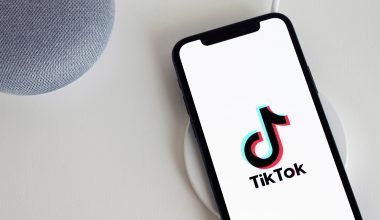Have you ever dreamed of recording your own music, podcasts, or voiceovers without leaving your house? Setting up a small home recording studio can turn that dream into reality. And guess what? It’s not as complicated or expensive as you might think. Let’s walk through the steps together to create a space that’s perfect for your creative projects.
Why Set Up a Home Recording Studio?
Before diving into the how, let’s talk about the why. A home recording studio gives you the freedom to create at any time. Whether inspiration strikes at midnight or early in the morning, your setup is just a few steps away. Plus, it can save you tons of money on studio rental fees. Most importantly, it allows you to experiment, learn, and refine your skills without any pressure.
Picking the Perfect Spot
The first step is finding the right location. You don’t need a big space. Even a small room or a quiet corner can work wonders. Look for a place that’s quiet and free from outside noise. Avoid rooms with lots of windows or hard surfaces, as they can cause unwanted echoes. If possible, choose a room with carpeted floors and curtains to help absorb sound.
If you’re limited on options, don’t worry. There are ways to improve the acoustics of almost any space. We’ll cover that later on.
Essential Equipment for Your Home Recording Studio
You don’t need to spend a fortune to get started. Here are the basics you’ll need:
1. Computer
Your computer will be the heart of your recording setup. Almost any modern computer can handle basic recording tasks. If you’re planning to work with heavy-duty software or large audio files, aim for one with decent processing power and plenty of RAM.
2. Audio Interface
An audio interface connects your instruments or microphones to your computer. It converts analog signals into digital ones so your software can process them. Look for an interface with at least two inputs and outputs, which should be enough for most home setups.
3. Microphone
Your microphone choice depends on what you’re recording. A condenser microphone is a great all-around option for vocals and acoustic instruments. If you’re on a budget, there are plenty of affordable models that offer excellent sound quality.
4. Headphones and Studio Monitors
Invest in a good pair of closed-back headphones for accurate monitoring while recording. Studio monitors (speakers) are also essential for mixing and mastering. They provide a flat frequency response, which helps you hear your recordings accurately.
5. Digital Audio Workstation (DAW)
A DAW is the software you’ll use to record, edit, and mix your audio. Popular options include Ableton Live, Logic Pro, and GarageBand. Many DAWs offer free trials, so test a few before committing.
6. Cables and Accessories
Don’t forget about the small stuff! You’ll need XLR cables for your microphone, USB cables for your interface, and possibly a pop filter to reduce plosive sounds.
Setting Up Your Space
Once you have your equipment, it’s time to set up your studio. Start by placing your desk in the middle of the room, away from walls. This helps minimize sound reflections. Your studio monitors should form an equilateral triangle with your head for the best listening experience.
Mount your microphone on a stand and position it slightly away from walls to avoid capturing echoes. If possible, use a reflection filter behind your microphone for better sound isolation.
Improving Acoustics
Good acoustics can make or break your recordings. Here are some tips to enhance your space:
- Acoustic Panels: Install foam panels on your walls to absorb sound. Place them at reflection points, like where sound bounces off the walls.
- Bass Traps: These are great for controlling low-frequency sounds, especially in the corners of the room.
- DIY Solutions: If you’re on a budget, thick blankets, rugs, and curtains can help dampen sound.
Recording Techniques
Now that your home recording studio is ready, let’s talk about recording techniques. Start by setting your input levels correctly. Aim for levels that don’t peak but are high enough to capture detail. Use your headphones to monitor the sound as you record.
Experiment with microphone placement. Moving the mic just a few inches can drastically change the tone. If you’re recording vocals, stay a few inches away from the microphone to avoid distortion.
Editing and Mixing
Editing and mixing can seem daunting at first, but practice makes perfect. Use your DAW to cut out unwanted noise and adjust the volume of each track. Add effects like reverb, EQ, and compression to enhance the sound.
Mixing is all about balance. Make sure each element has its place in the mix without overpowering others. Use your studio monitors to check your mix and listen on different devices to ensure it sounds good everywhere.
Final Thoughts
Setting up a small home recording studio is an exciting journey. It’s a space where you can let your creativity flow and bring your ideas to life. Remember, you don’t need the fanciest equipment to get started. Focus on learning and improving with what you have. Over time, you can upgrade your setup as your skills grow.
For further reading, explore these related articles:
- The Story of Kesha: A Journey of Music, Strength, and Inspiration
- Exploring the World’s Smallest Speaker: Tiny but Powerful!
For additional resources on music marketing and distribution, visit Deliver My Tune.






